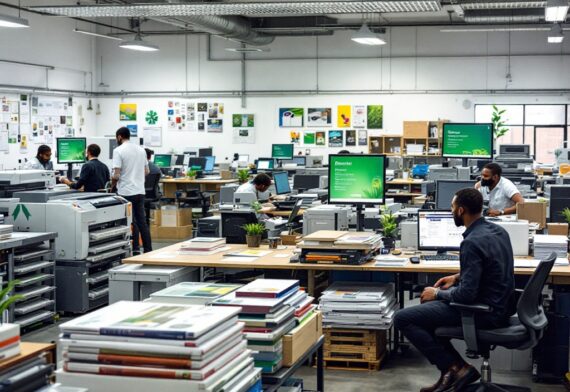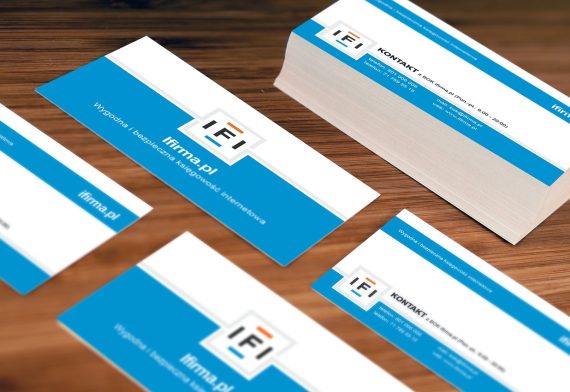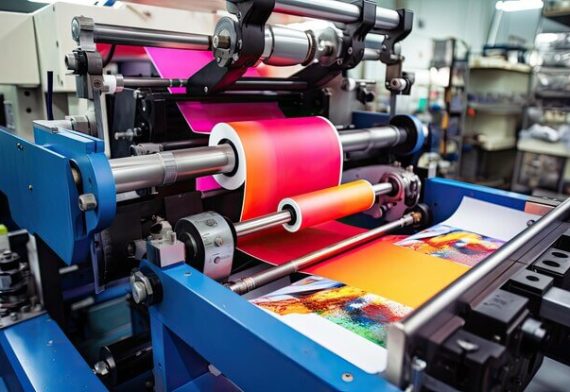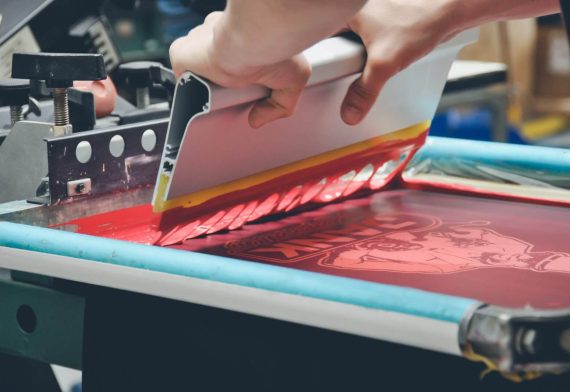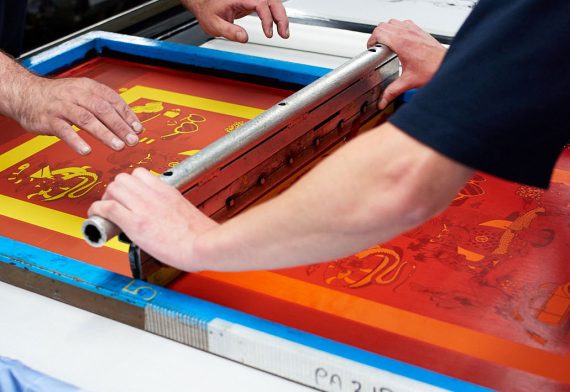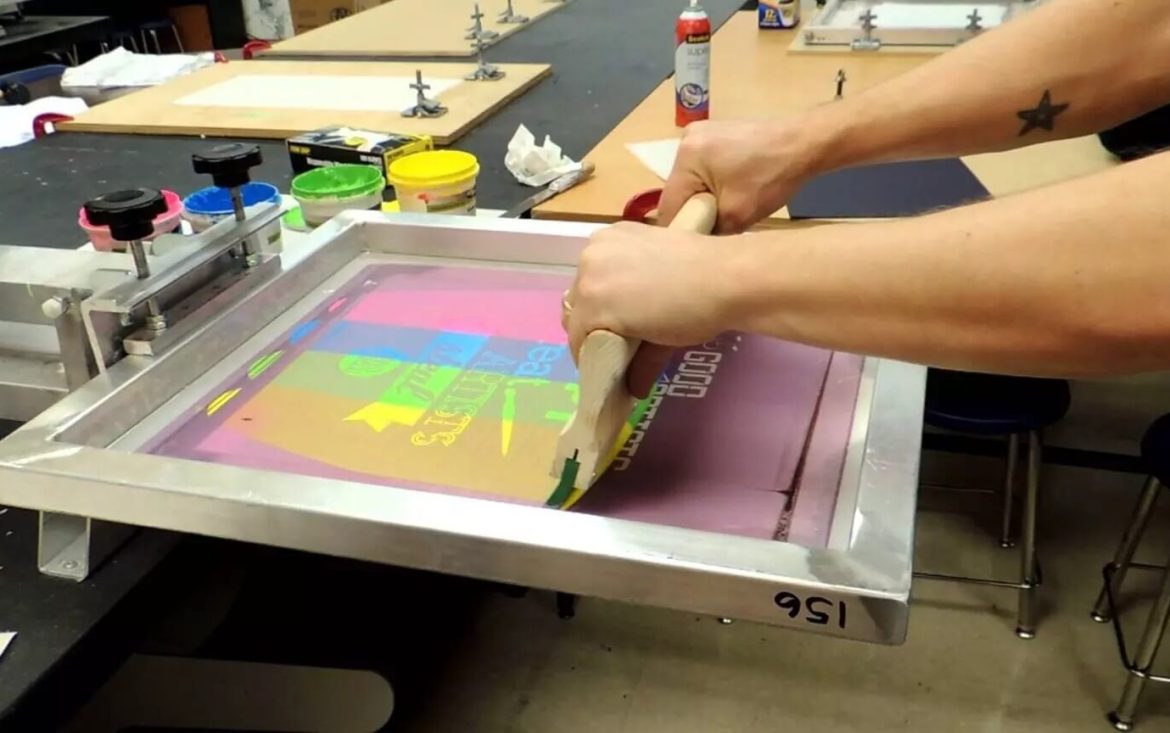
Running a successful screen printing company is an art and a science. It’s not just about transferring ink onto a substrate; it’s about precision, quality, and delivering a product that exceeds customer expectations. In this blog post, we’ll delve into the steps necessary to ensure your screen printing company consistently produces high-quality results, capturing both the nuances of the craft and the practical steps required to achieve excellence.
Invest in Quality Equipment and Materials
The backbone of any high-quality screen printing operation is the equipment and materials used. Investing in top-tier tools and substrates ensures that you can deliver consistent, professional results.
Advanced Printing Machines
The right machinery can make or break your business. Advanced screen printing machines offer better precision, efficiency, and consistency. Look for features such as automatic press calibration, precise micro-registration systems, and multi-color printing capabilities. These features help reduce human error and ensure that every print run is identical to the last.
Premium Screens and Inks
Quality screens and inks are essential. High-tension screens coated with the right emulsion produce sharper images and better ink transfer. Premium inks, whether plastisol, water-based, or discharge, provide vibrant colors that last longer and are less prone to cracking or fading. Always test your inks on the materials you will be printing on to ensure compatibility and durability.
High-Quality Substrates
Your prints are only as good as the substrates they’re on. High-quality garments and other materials specifically designed for screen printing provide a smoother surface for ink application and ensure better adhesion and durability. Choosing reputable suppliers and testing materials before full-scale production can save time and resources in the long run.
Hire and Train Skilled Technicians
No matter how good your equipment is, it’s the people operating it who ultimately determine the quality of your output. Skilled technicians are invaluable assets to your screen printing company.
Comprehensive Training Programs
Invest in comprehensive training programs for your staff. This includes initial training for new hires as well as ongoing education for experienced employees. Training should cover everything from basic equipment operation to advanced troubleshooting and maintenance techniques. Keeping your team up-to-date with the latest industry standards and technologies ensures they are always prepared to deliver high-quality results.
Experienced Technicians
Experience is a significant factor in producing high-quality prints. Technicians with years of experience bring a deep understanding of the nuances of screen printing, from proper ink application to troubleshooting common issues. Hiring experienced professionals can dramatically reduce the learning curve and increase the overall efficiency and quality of your operations.
Implement Rigorous Quality Control Procedures
Quality control is critical in ensuring that every product leaving your facility meets your high standards. This involves systematic checks and balances at every stage of the production process.
Inspection at Every Stage
Implement thorough inspections at each stage of the production process, from pre-press to post-press. Check the artwork for accuracy, ensure screens are correctly prepared, and verify ink colors and consistency. Regular inspections help catch issues early, allowing for corrections before they become larger problems that affect the final product.
Consistency Monitoring
Consistency is key in screen printing. Ensure that every print in a run is identical to the last. Use color matching systems like Pantone to achieve precise color consistency across all prints. Maintain detailed records of each print job to track any variations and address them promptly.
Maintain a Clean and Organized Workspace
A clean and organized workspace is essential for efficient production and high-quality results. Clutter and contamination can lead to mistakes and subpar prints.
Clean Environment
Regular cleaning of your workspace and equipment is non-negotiable. Dust, lint, and other contaminants can easily ruin a print. Establish a routine cleaning schedule for all equipment and ensure that screens, squeegees, and other tools are thoroughly cleaned after each use.
Organized Workflow
An organized workflow helps streamline production and reduce errors. Clearly label all materials and tools, and create a logical layout for your workspace that minimizes unnecessary movement and handling. This reduces the risk of mistakes and helps your team work more efficiently.
Develop a Robust Pre-Production Process
Pre-production is where the foundation of a high-quality print is laid. Proper planning and preparation can prevent many common issues and ensure smooth production.
Artwork Approval
Establish a detailed process for artwork approval. This includes creating mock-ups and obtaining client sign-offs before proceeding with production. Clear communication with clients during this stage ensures that the final product meets their expectations. Digital proofs and physical samples can help clients visualize the end result and make any necessary adjustments before production begins.
Color Matching
Accurate color matching is crucial in screen printing, especially for brand-specific projects. Use Pantone color matching systems to ensure the colors in the final print match the client’s specifications. Conduct test prints and make adjustments as needed to achieve the perfect match.
Use Proper Printing Techniques and Settings
The techniques and settings you use during the printing process significantly impact the final result. Proper curing, screen tension, and registration are just a few factors to consider.
Correct Curing
Proper curing ensures that the ink adheres to the fabric and doesn’t crack or fade over time. Use the correct curing temperatures and times based on the type of ink and fabric you’re using. Investing in a high-quality conveyor dryer can help achieve consistent curing results. Regularly test your curing process to ensure it meets the necessary standards.
Appropriate Screen Tension
Maintaining the correct tension in your screens is crucial for achieving sharp, detailed prints. Regularly check and adjust screen tension to ensure it remains within the optimal range. Over-tensioned or under-tensioned screens can lead to blurry or distorted prints. Proper tension ensures even ink distribution and reduces the risk of misprints.
Accurate Registration
Accurate registration is key for multi-color prints. Use precise registration techniques to ensure that all colors align perfectly. This involves careful setup and constant monitoring during the printing process. Tools like registration systems and micro-registration adjustments can help achieve perfect alignment.
Offer Excellent Customer Service
Customer service is not just about addressing issues; it’s about creating a positive experience for your clients from start to finish.
Clear Communication
Keep clients informed throughout the production process. From initial consultation to final delivery, clear communication helps manage expectations and build trust. Provide regular updates on the progress of their orders and be transparent about any potential delays or issues.
Feedback System
Implement a system for gathering and acting on client feedback. This not only helps you understand their needs better but also provides valuable insights for improving your services. Encourage clients to leave reviews and testimonials, and respond promptly to any concerns or complaints.
Stay Updated with Industry Trends
The screen printing industry is constantly evolving. Staying updated with the latest trends and technologies is essential for maintaining a competitive edge.
Continuous Learning
Invest in continuous learning for yourself and your team. Attend industry conferences, trade shows, and workshops to stay informed about the latest developments. Subscribe to industry publications and join professional associations to network with peers and experts.
Industry Networking
Networking with other professionals in the screen printing industry can provide valuable insights and opportunities for collaboration. Building strong relationships with suppliers, clients, and industry experts can help you stay ahead of trends and innovations.
Conduct Regular Equipment Maintenance
Regular maintenance of your equipment ensures optimal performance and longevity. Neglecting maintenance can lead to breakdowns and costly repairs.
Routine Maintenance
Perform routine maintenance on all your printing equipment. This includes cleaning, lubricating, and calibrating machines to ensure they operate smoothly. Keep a maintenance log to track when each piece of equipment was serviced and any issues that were addressed.
Screen Care
Properly clean and store your screens to extend their lifespan and maintain print quality. Regularly inspect screens for damage and replace them as needed. Proper screen care helps prevent issues like ghosting and ensures sharp, detailed prints.
Adopt Sustainable Practices
Sustainability is becoming increasingly important in the screen printing industry. Adopting eco-friendly practices can not only reduce your environmental impact but also improve the quality of your prints.
Eco-Friendly Materials
Use environmentally friendly inks and materials. Water-based inks, for example, are not only better for the environment but also produce softer, more breathable prints. Look for suppliers who prioritize sustainability and offer eco-friendly products.
Waste Reduction
Implement practices to minimize waste. This includes efficient use of materials, recycling, and proper disposal of hazardous waste. Reducing waste not only benefits the environment but also helps lower costs and improve efficiency.
Conclusion
Ensuring your screen printing company delivers high-quality results requires a multifaceted approach. From investing in the right equipment and materials to maintaining an organized workspace and offering excellent customer service, every aspect plays a crucial role. By following these strategies and staying committed to continuous improvement, you can consistently meet and exceed your clients’ expectations.

